I think a better approach would be to inspect the bits. Normalized or denormalized is a characteristic of the binary representation, not of the value itself. Therefore, you will be able to detect it more reliably this way and you can do so without and potentially dangerous floating point comparisons.
I put together some runnable code for you, so that you can see it work. I adapted this code from a similar question regarding doubles. Detecting the denormal is much simpler than fully excising the exponent and significand, so I was able to simplify the code greatly.
As for why it works... The exponent is stored in offset notation. The 8 bits of the exponent can take the values 1 to 254 (0 and 255 are reserved for special cases), they are then offset adjusted by -127 yielding the normalized range of -126 (1-127) to 127 (254-127). The exponent is set to 0 in the denormal case. I think this is only required because .NET does not store the leading bit on the significand. According to IEEE 754, it can be stored either way. It appears that C# has opted for dropping it in favor of a sign bit, though I don't have any concrete details to back that observation.
In any case, the actual code is quite simple. All that is required is to excise the 8 bits storing the exponent and test for 0. There is a special case around 0, which is handled below.
NOTE: Per the comment discussion, this code relies on platform specific implementation details (x86_64 in this test case). As @ChiuneSugihara pointed out, the CLI does not ensure this behavior and it may differ on other platforms, such as ARM.
using System;
namespace ConsoleApplication1
{
class Program
{
static void Main(string[] args)
{
Console.WriteLine("-120, denormal? " + IsDenormal((float)Math.Pow(2, -120)));
Console.WriteLine("-126, denormal? " + IsDenormal((float)Math.Pow(2, -126)));
Console.WriteLine("-127, denormal? " + IsDenormal((float)Math.Pow(2, -127)));
Console.WriteLine("-149, denormal? " + IsDenormal((float)Math.Pow(2, -149)));
Console.ReadKey();
}
public static bool IsDenormal(float f)
{
// when 0, the exponent will also be 0 and will break
// the rest of this algorithm, so we should check for
// this first
if (f == 0f)
{
return false;
}
// Get the bits
byte[] buffer = BitConverter.GetBytes(f);
int bits = BitConverter.ToInt32(buffer, 0);
// extract the exponent, 8 bits in the upper registers,
// above the 23 bit significand
int exponent = (bits >> 23) & 0xff;
// check and see if anything is there!
return exponent == 0;
}
}
}
The output is:
-120, denormal? False
-126, denormal? False
-127, denormal? True
-149, denormal? True
Sources:
extracting mantissa and exponent from double in c#
https://en.wikipedia.org/wiki/IEEE_floating_point
https://en.wikipedia.org/wiki/Denormal_number
http://csharpindepth.com/Articles/General/FloatingPoint.aspx
Code adapted from:
extracting mantissa and exponent from double in c#
